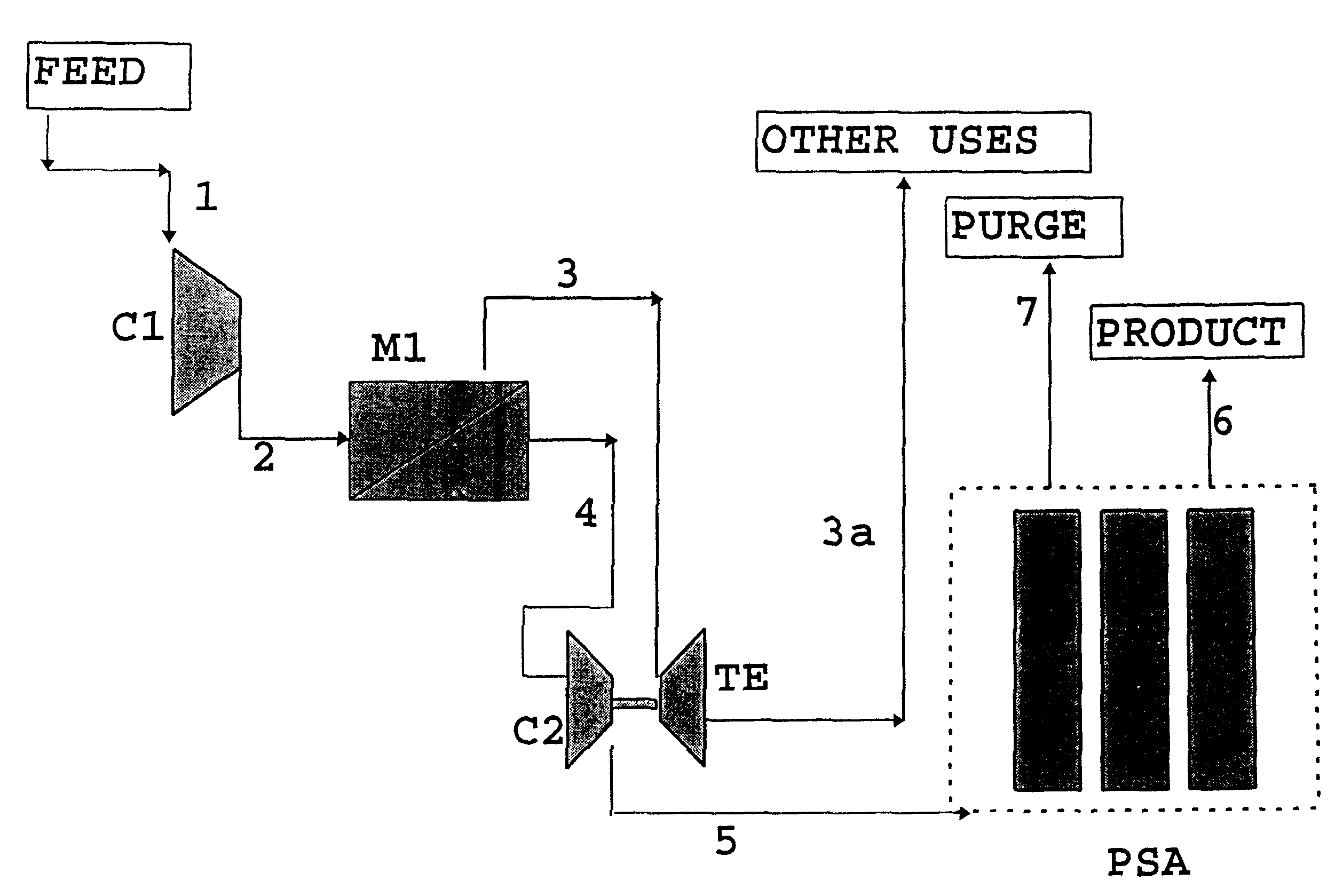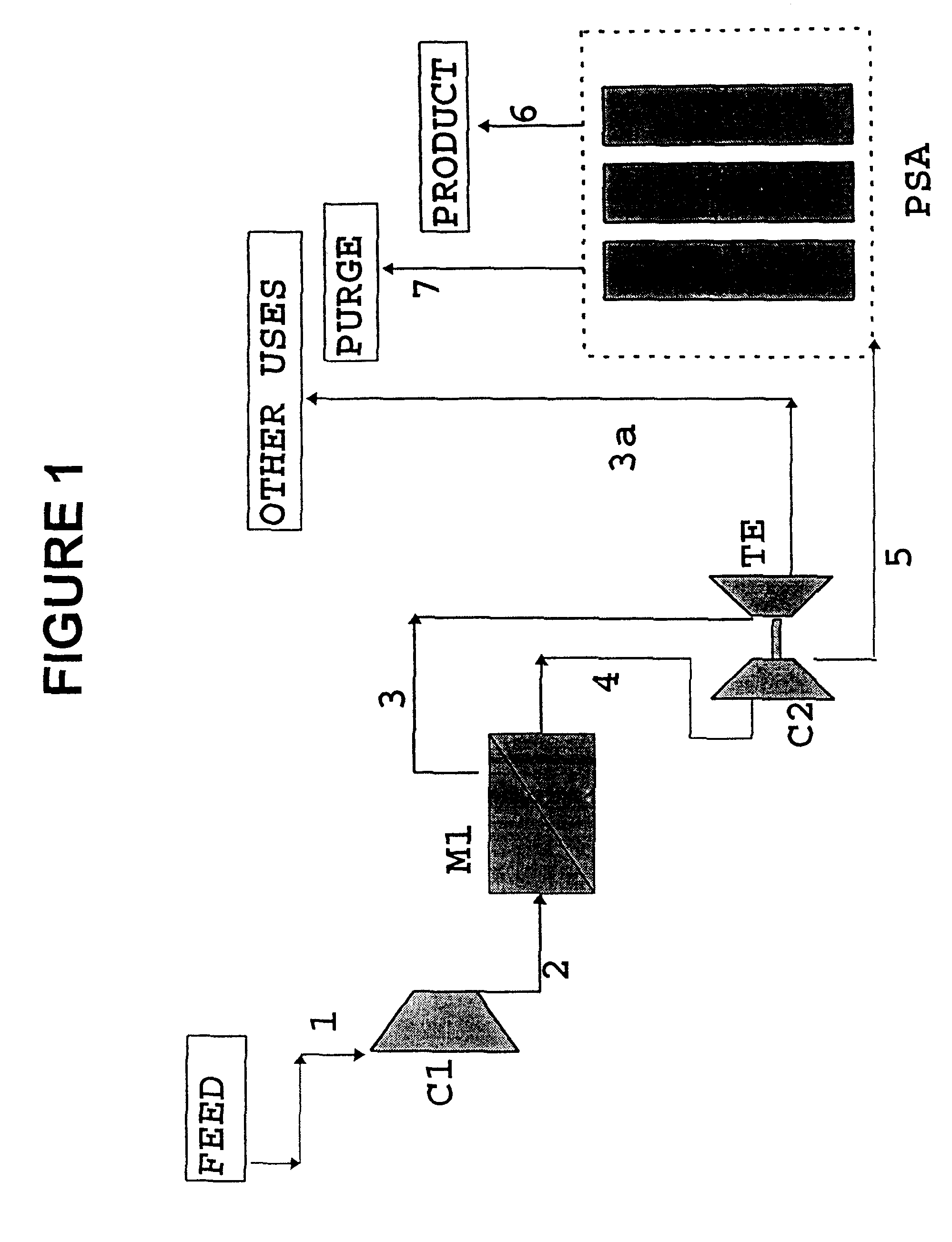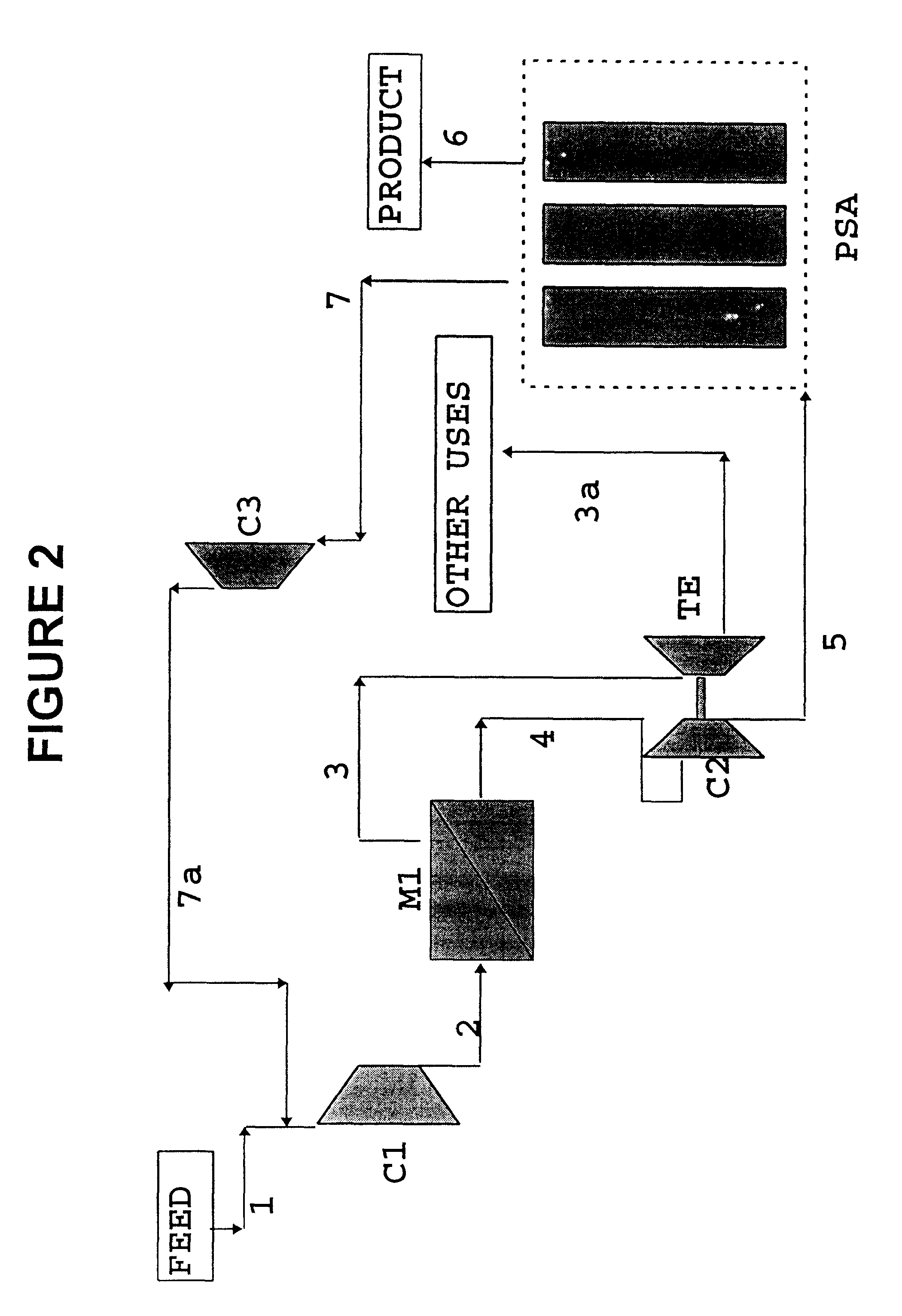Process for the separation/recovery of gases
a gas recovery and gas technology, applied in the direction of separation processes, hydrogen separation using solid contact, nitrogen purification/separation, etc., can solve the problems of uneconomical purification of a permeating desired component by membranes, inefficient use of stand-alone membrane units, and inability to achieve the purification effect of a large amount of gas
- Summary
- Abstract
- Description
- Claims
- Application Information
AI Technical Summary
Benefits of technology
Problems solved by technology
Method used
Image
Examples
example 2
This Example illustrates an embodiment of the present invention where the waste stream of the PSA unit--stream 7--and typically having pressure around 0.2 to 0.5 bar and hydrogen molar content around 32 mole % is directed to a compressor C3 to increase pressure and combined to feed stream 1 to be directed to permeation through membrane unit M1. Thus, the overall recovery reaches 76%. In this embodiment a higher recovery is obtained at a slightly higher cost due to additional compression of stream 7. FIG. 2 illustrates the embodiment while TABLE 2 attached lists the mass balance with PSA purge recycle.
TABLE 3 below ilustrates the process conditions for the present invention. It can be seen that stream 2 is submitted to permeation through the membrane unit at a temperature between 40 and 120.degree. C., preferably between 70 and 80.degree. C. and pressure between 25-40 bar, preferably 30-40 bar. Maximum temperature for stream 2 is a function of the thermal strength of the membrane use...
example 3
This Example illustrates the present invention in case the desired component is helium, present for example in very low molar content and moderate pressure in any helium-containing stream. As shown in FIG. 3, feed stream is directed to a set of two membranes and a PSA system. Process conditions are set forth on TABLE 4 below. The overall recovery rate for helium is about 50%.
Therefore, the three embodiments of the present invention demonstrate that by the adequate choice of permeability / selectivity of a membrane unit combined to a PSA unit it is possible to attain moderate to high rates of recovery of a desired component present in low / very low molar amount in a low / moderate pressure stream.
Also, the flexibility of the present process permits a certain array of modifications and variations that make possible not only the separation / recovery of gases such as hydrogen and helium, besides other gases, at low cost, but also, by adding well-known, state-of-the-art equipment, the recovery...
PUM
| Property | Measurement | Unit |
|---|---|---|
| pressure | aaaaa | aaaaa |
| pressure | aaaaa | aaaaa |
| pressure | aaaaa | aaaaa |
Abstract
Description
Claims
Application Information
 Login to View More
Login to View More - R&D
- Intellectual Property
- Life Sciences
- Materials
- Tech Scout
- Unparalleled Data Quality
- Higher Quality Content
- 60% Fewer Hallucinations
Browse by: Latest US Patents, China's latest patents, Technical Efficacy Thesaurus, Application Domain, Technology Topic, Popular Technical Reports.
© 2025 PatSnap. All rights reserved.Legal|Privacy policy|Modern Slavery Act Transparency Statement|Sitemap|About US| Contact US: help@patsnap.com



